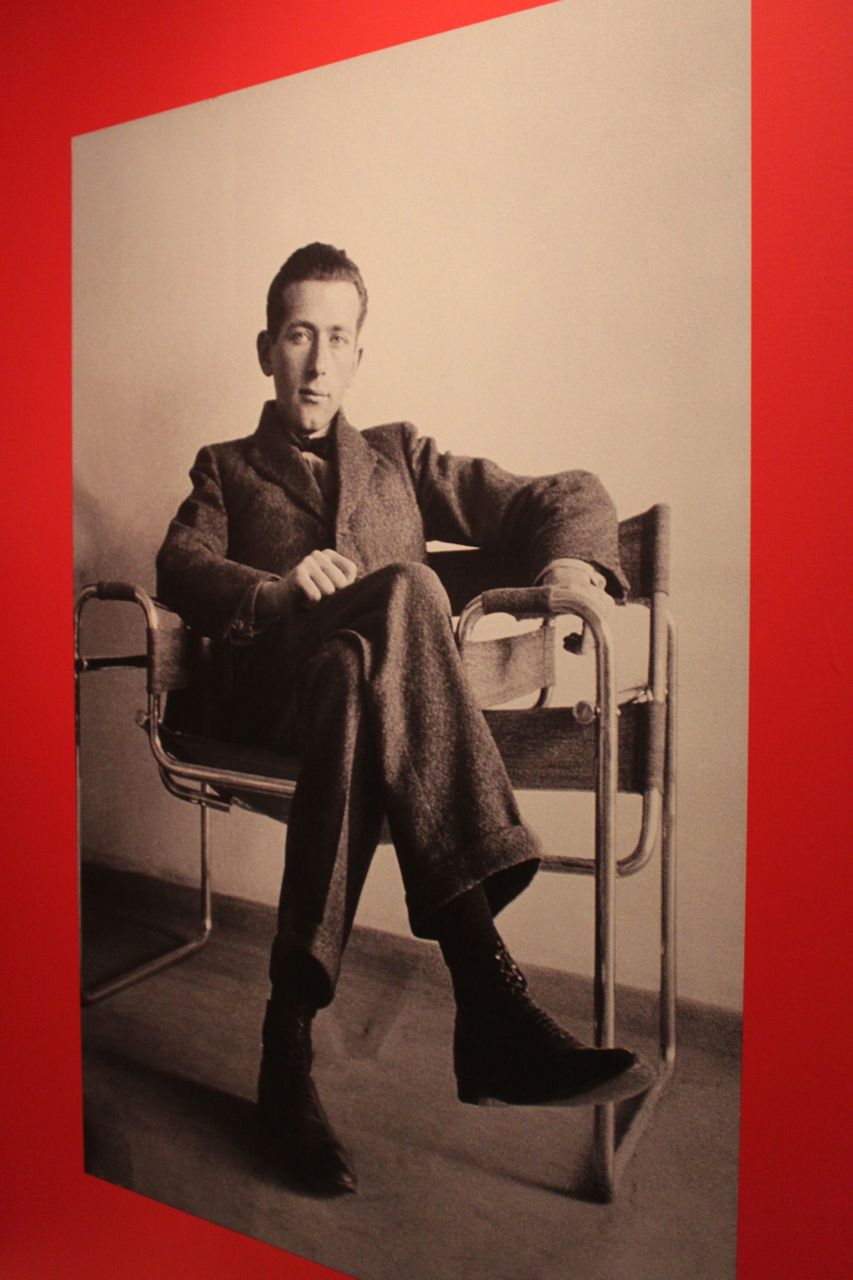Tomorrow opens a new exhibition on the great twentieth-century architect, Marcel Breuer, at the Palais de Chaillot in Paris.
After presenting Henri Labrouste, the Cité de l’Architecture et du Patrimoine skips forward a century and presents another great architect who may not be among the best known to the general public, but who is revered within the profession.
Marcel Breuer was very precocious a designer of furniture and interiors, having taught at the Bauhaus and designed some iconic chairs in his mid-twenties. But was well into his 40s before he began making a name for himself as an architect.
The Cité de l’Architecture exhibition, designed by the Vitra Design Museum in Weil-am-Rhein, balances these two aspects of Breuer’s work.

The periphery of the space is occupied by furniture designed by Breuer, such as the famous chairs of tubular metal, and pictures of the interiors he produced while still in Germany in the 1920s and early 1930s.
The center of the hall is dedicated to Breuer’s architecture, presented through very pure, carefully crafted white models, photographs, slide shows and clever pull-out plans.

In the area of architecture, Breuer eventually became associated with his large-scale buildings, such as the Whitney Museum, the UNESCO building, and some quite spectacular churches.
It is remarkable to review these buildings again today, because their mass, their sculptural qualities, their attention to the natures of material make them in line with contemporary sensitivities, when only five or ten years ago they seemed hopelessly outdated.
A particularly striking aspect of Breuer’s work is his willingness to deal with opacity. There is no cult of transparency, no systematc nature of the use of the glass curtain wall.
Instead, light is carefully managed an calibrated, the link between inside and outside can come from narrow slits, roof lighting, or courtyards.

Personally, the area of Breuer’s work that has always held the most fascination for me is his houses.
Breuer does not attempt to overcomplexify the most essential of building programs. The volumes are simple, the articulations straightforward, the materials and techniques rigorous and honest.
But Breuer maintains an elegance and an attention to the qualities that make a place a home, that favor the interactions within the members of a family and between the home and its natural environment.
These houses have become icons of a certain art of living in 1950s America.

Those who are not familiar with Breuer will find in the exhibition an accessible presentation of an architect whose work they in a way know, even if they were not aware of it.
Those who do know Breuer will find new facets of his production to explore, and an opportunity to reflect on the craft of this master of twentieth century architecture.
Marcel Breuer (1902-1981) Design & Architecture runs at the Cité de l’Architecture et du Patrimoine, until July 17th, 2013.
Related posts
Paris’s Architecture Museum: La Cité de l’Architecture et du Patrimoine
